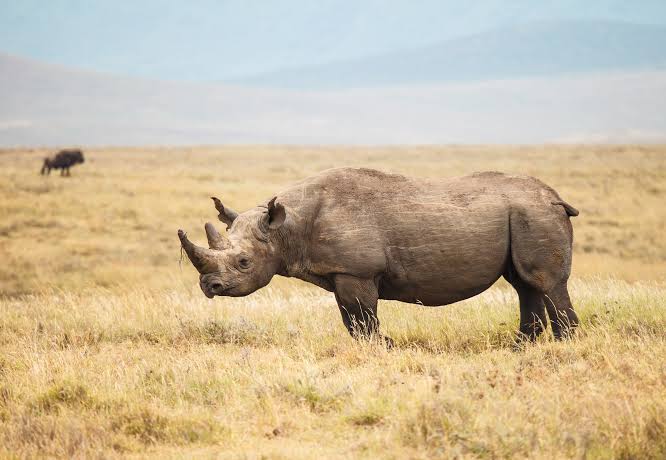In a landmark conservation effort, ten critically endangered black rhinos have been reintroduced to Mozambique’s Zinave National Park, fifty years after the species disappeared from the region. Conservationists announced the successful translocation on Thursday, describing it as a crucial step toward restoring the country’s natural heritage and securing the survival of the species in southern Africa.
The operation involved relocating five male and five female rhinos from South Africa to central Mozambique, a journey that spanned approximately 48 hours by road. The Peace Parks Foundation, which played a key role in organizing the move, said the animals were carefully monitored throughout the transfer to ensure their safety and well-being.
“This wasn’t just a symbolic act,” explained Lesa van Rooyen, the foundation’s communication coordinator. “Introducing these ten individuals was necessary to establish a genetically viable and sustainable breeding population within Zinave National Park.”
A Major Milestone in Mozambique’s Conservation History
South Africa’s environment ministry, a partner in the initiative, emphasized that the arrival of the rhinos marks the creation of the first viable founder population of black rhinos in Mozambique in nearly half a century. Their return signifies not only the restoration of a species but also a broader effort to revive ecosystems severely impacted by decades of conflict and poaching.
This is not the first time black rhinos have been brought to Zinave. A previous translocation saw twelve individuals moved from South Africa to the park, but conservationists determined that the population size remained too small for long-term recovery. The addition of the new group enhances the chances of successful breeding and genetic diversity.
In addition to the black rhinos, 25 white rhinos — classified as near threatened rather than critically endangered — have also been relocated to Zinave over multiple operations. These combined efforts are part of a broader rewilding initiative aimed at restoring key species and biodiversity to Mozambique’s protected areas.
From Devastation to Recovery
The black rhino, once widespread across Sub-Saharan Africa, has faced near extinction due to human activities. Between 1970 and 1993, their numbers plummeted by 96%, driven by relentless hunting and poaching, particularly for their horns, which are highly prized on black markets in parts of Asia.
According to the International Rhino Foundation, the wild population of black rhinos dropped to just 2,300 in the early 1990s. Intensive international conservation measures have since helped boost numbers to an estimated 6,421, yet the species remains critically endangered.
Mozambique’s own rhino population was decimated during the country’s 15-year civil war, which ended in 1992. Van Rooyen noted that during this period, many Mozambicans turned to wildlife as a source of food amid severe economic hardship and instability.
“The war created a humanitarian crisis where people had to survive by any means necessary,” she said. “That, combined with unchecked poaching, wiped out large populations of wildlife, including rhinos.”
Rewilding Zinave: A Symbol of Hope
Years of focused rewilding efforts have turned Zinave National Park into a conservation success story. Once devoid of its most iconic species, the park is now the only protected area in Mozambique where visitors can find all of Africa’s renowned “Big Five” — elephant, rhino, lion, leopard, and buffalo.
Conservationists see the return of black rhinos not only as a win for biodiversity but also as a step toward bolstering eco-tourism and local community development. By restoring ecosystems and reintroducing keystone species, initiatives like this one help build resilience and sustainable livelihoods in post-conflict regions.
With careful monitoring and continued support, the newly relocated rhinos could spark the beginning of a self-sustaining population in Zinave — a powerful symbol of renewal for a country rebuilding its natural legacy.



